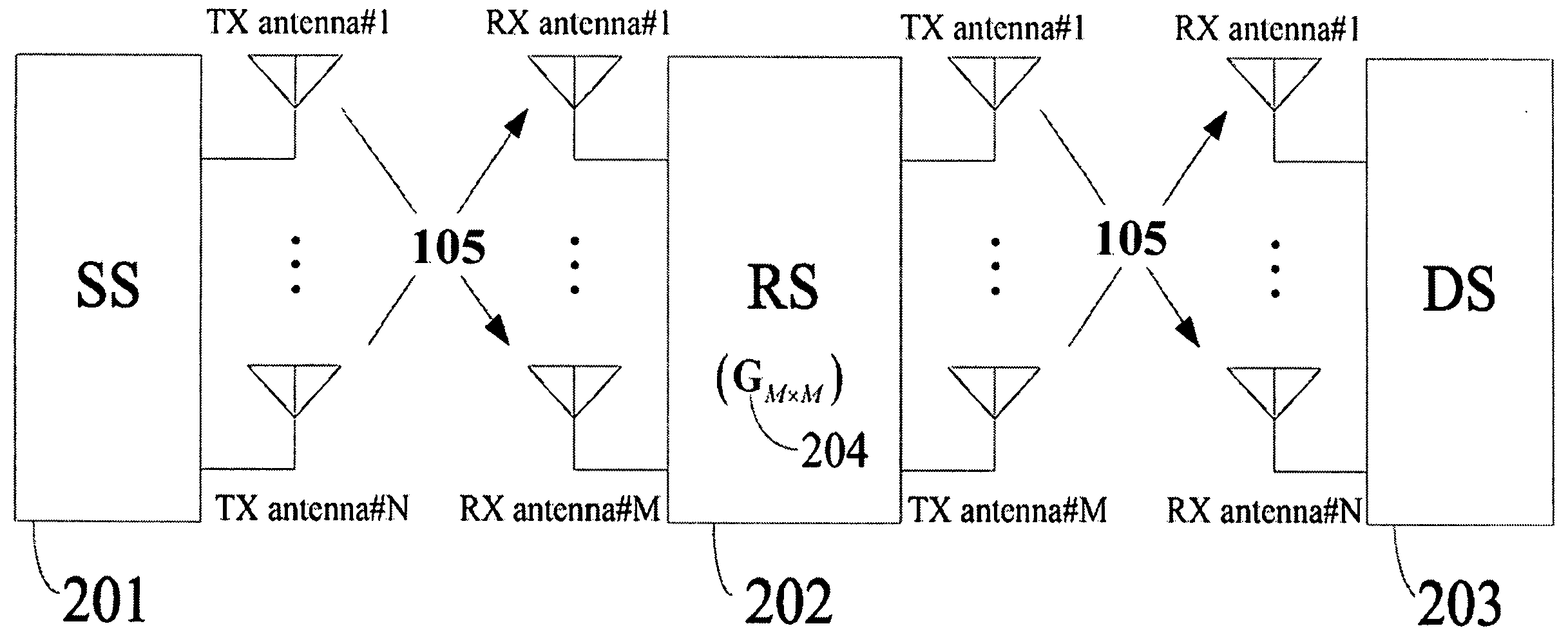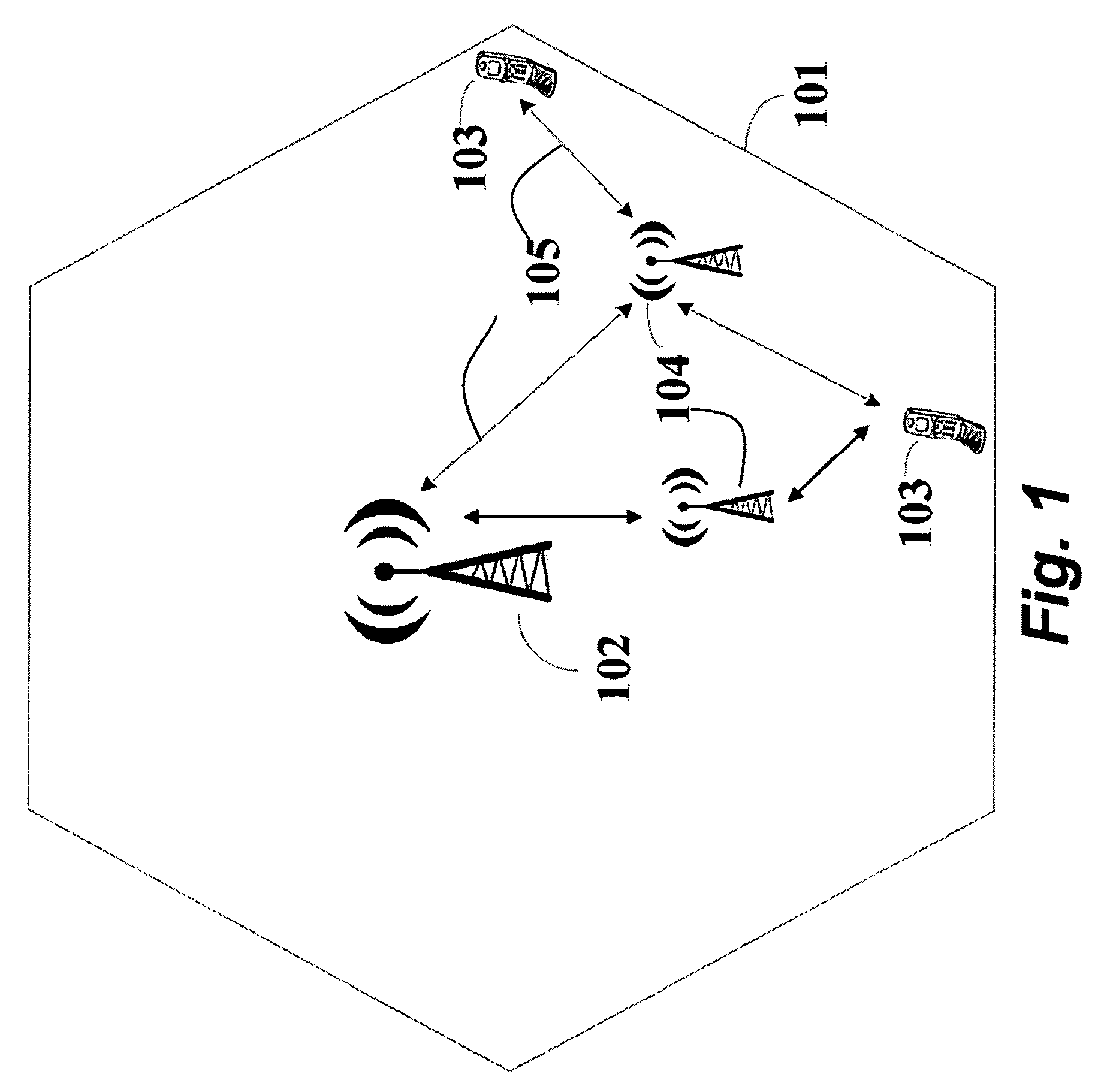Method for Allocating Power to Source and Relay Stations in Two-Hop Amplify-and-Forward Relay Multi-Input-Multi-Output Networks
a relay station and multi-input-multi-output technology, applied in the direction of transmission monitoring, power management, electrical equipment, etc., can solve the problems and achieve the effect of good trade-off between performance and complexity
- Summary
- Abstract
- Description
- Claims
- Application Information
AI Technical Summary
Benefits of technology
Problems solved by technology
Method used
Image
Examples
Embodiment Construction
[0014]FIG. 1 shows a two-hop relay cooperative communication network capable with static power allocation to a source station (SS) and a relay station (RS) 104 according to the embodiments of our invention. The network can be a wireless local network, a metropolitan area network, or in a wireless cellular (mobile) network. It could be understood that there can be multiple relay stations.
[0015]In a service area 101, there is one base station (BS) 102, multiple mobile stations (MS) 103 communicating with the BS in parallel, and one or more of the RSs 104. The RSs assist a remote MS to communicate with the BS. The RS can concurrently assist multiple MSs, while each MS only communicates with only one RS at the time. The RS can be fixed, nomadic, or even mobile.
[0016]Depending on a direction of communication, i.e., downlink or uplink, the BS and the mobile stations can operate as the SS or the DS. That is, the communication is considered to be bi-directional between the BS and the MS. Th...
PUM
 Login to View More
Login to View More Abstract
Description
Claims
Application Information
 Login to View More
Login to View More - R&D
- Intellectual Property
- Life Sciences
- Materials
- Tech Scout
- Unparalleled Data Quality
- Higher Quality Content
- 60% Fewer Hallucinations
Browse by: Latest US Patents, China's latest patents, Technical Efficacy Thesaurus, Application Domain, Technology Topic, Popular Technical Reports.
© 2025 PatSnap. All rights reserved.Legal|Privacy policy|Modern Slavery Act Transparency Statement|Sitemap|About US| Contact US: help@patsnap.com



